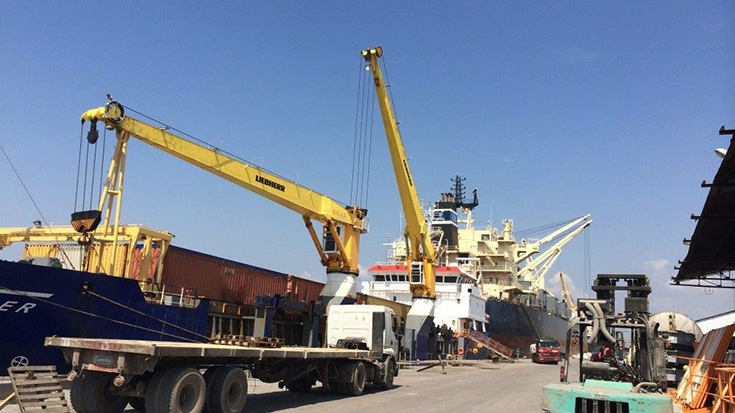YAOUNDÉ, February, 12 2015 — As the main point of entry for imports to Cameroon and two neighboring landlocked countries, Chad and Central African Republic, the port of Douala is a natural hub for the Central African region. However, despite its strategic location, the port suffers from a number of inefficiencies that represent a major constraint to growth. The 8th edition of the Cameroon Economic Update, which analyzes economic development trends in the country, focuses on improving the efficiency of Cameroon’s busiest port.
In 2014, transit through this port —which accounts for at least 95% of the goods exported from and imported to Cameroon— and through the Douala International Terminal (DIT) in particular, reached its saturation point. This was mainly due to a lack of investment and the absence of routine dredging. The Port of Douala is therefore constrained by a long delay at the entry gate as well as by a long dwell time causing congestion that increases of food prices and the scarcity of certain products and goods.
Improving the management of the Port of Douala to significantly reduce cargo dwell time and ensure its complementarity with the ports of Kribi and Limbe will be essential for Cameroon’s external competitiveness. The eighth edition of the Cameroon Economic Update provides several recommendations on how to improve the efficiency of the port.
While various efforts have been deployed over the years to reduce the global dwell time to 7 days at the end of the 1990s, this has yet to be achieved. The global dwell time still represents more than three times that target, mainly due to weak a coordination of frontline stakeholders, monopolies of inspection and terminal operators, ineffective legislation, a high share of informal and unprofessional brokers, complexity and length of import procedures, and material limitations of the port.
One proposed solution is the preparation and adoption by all stakeholders of a comprehensive structural reform plan based on an independent audit of the key choke points in any area of the port’s operations. Another proposed solution is the revision of the legal framework governing the port. Regardless of the chosen solution, implementing these reforms will require building a consensus among various stakeholders and overcoming the status-quo practices and behaviors prevailing within the port.
In Cameroon, growth is projected to remain strong in 2014 at 5.3% in spite of the gloomy global economic environment, declining international oil prices, and a security crisis in the northern region of the country. With the non-oil sector expected to maintain its current performance, GDP growth is projected to average 5% over the next five years however this remains below the objectives set by the government in its Strategic Document for Growth and Employment over the period 2010-2020.
